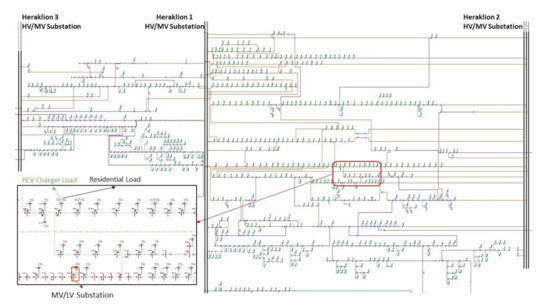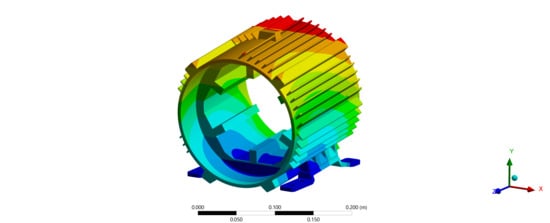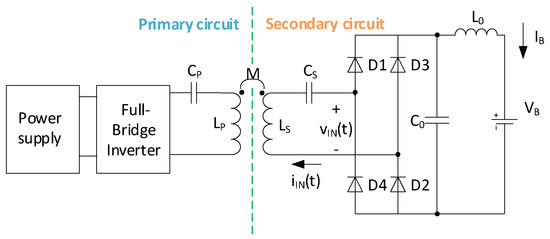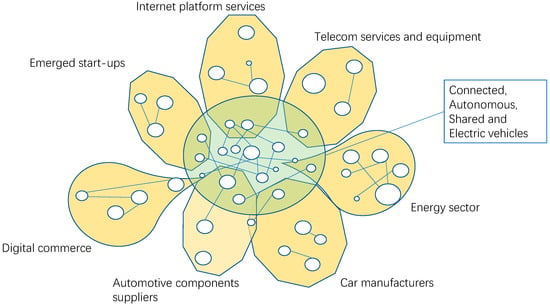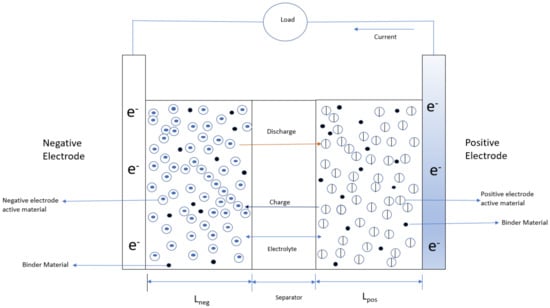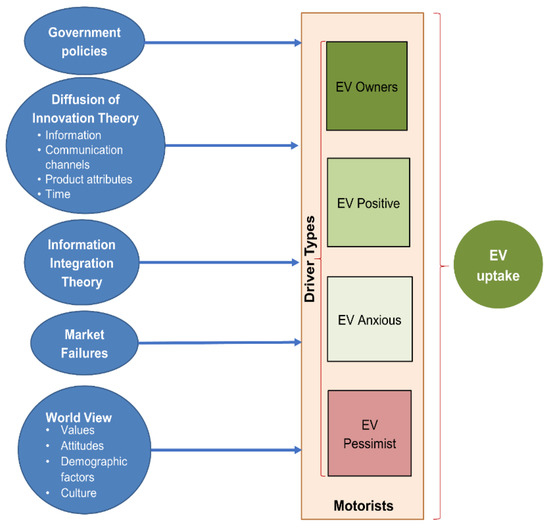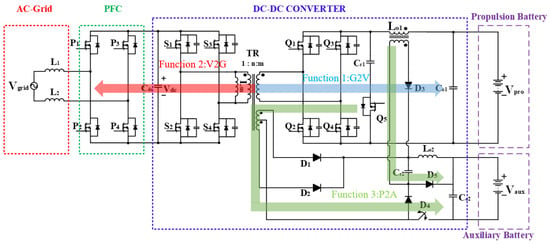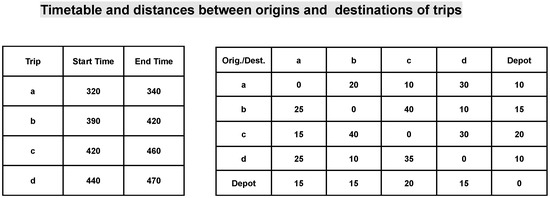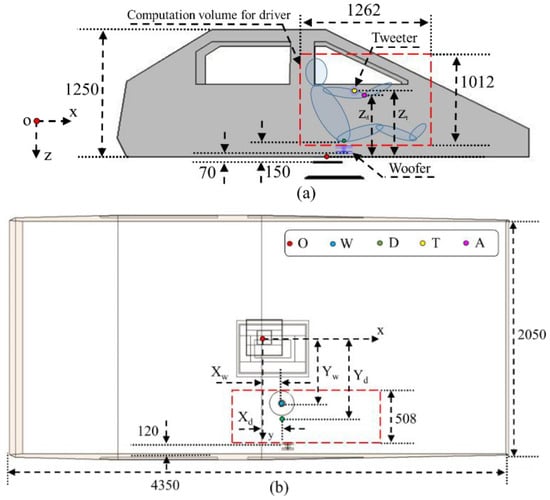Invited Papers on Electric Vehicles
Share This Topical Collection
Editors
 Prof. Dr. Rui Xiong
Prof. Dr. Rui Xiong
 Prof. Dr. Rui Xiong
Prof. Dr. Rui Xiong
grade
E-Mail
Website
Collection Editor
Department of Vehicle Engineering, Beijing Institute of Technology, Beijing 100081, China
Interests: intelligent electrified vehicle; batteries; energy storage; machine learning; AI; big-data; control; optimization and management.
Special Issues, Collections and Topics in MDPI journals
 Dr. Daniel T. Hallinan Jr.
Dr. Daniel T. Hallinan Jr.
 Dr. Daniel T. Hallinan Jr.
Dr. Daniel T. Hallinan Jr.
E-Mail
Website
Collection Editor
Chemical & Biomedical Engineering, FAMU-FSU College of Engineering, 2525 Pottsdamer St, Tallahassee, FL 32310, USA
Interests: polymer physics; polymer electrolytes; energy storage; electrochemical cells; solid battery electrolytes
 Dr. Giuseppe Aiello
Dr. Giuseppe Aiello
 Dr. Giuseppe Aiello
Dr. Giuseppe Aiello
E-Mail
Website
Collection Editor
Dipartimento di Ingegneria, University of Palermo, 90133 Palermo, PA, Italy
Interests: simulation; biomaterials; methodology; production; optimization; operations management; logistics; production planning; lean manufacturing; production/operations management
Special Issues, Collections and Topics in MDPI journals
Topical Collection Information
Dear Colleagues,
Modern logistics and transportation systems generate a large amount of pressure on the ecosphere due to their intense consumption of natural resources and to the emission of pollutants and greenhouse gases. Increasing the sustainability and efficiency of logistic and transportation systems is a fundamental issue for ensuring the conservation of a healthy lifestyle for our future generations. Electric mobility is considered an essential component of efficient and sustainable logistic systems. The transition from fossil fuels to electric propulsion, however, is a complex task and involves many open challenges, concerning, e.g., the design of advanced electric vehicles (EV), the production of energy storage systems (ESS), and the development of adequate aerial, terrestrial, and naval infrastructures. This Topical Collection focuses on the landscape of technologies for EV in order to meet technical, socioeconomic, and environmental goals. In particular, this issue seeks to contribute to such topics through enhanced scientific and multidisciplinary knowledge. We therefore invite papers on innovative technical developments, reviews, case studies, as well as analytical and assessment papers from different disciplines that are relevant to the topic of EV. It should be noted that all excellent papers can apply for a certain discount, after been published, it will be marked as a “feature paper”.
Prof. Dr. Rui Xiong
Dr. Daniel T. Hallinan Jr.
Dr. Giuseppe Aiello
Collection Editors
Manuscript Submission Information
Manuscripts should be submitted online at www.mdpi.com by registering and logging in to this website. Once you are registered, click here to go to the submission form. Manuscripts can be submitted until the deadline. All submissions that pass pre-check are peer-reviewed. Accepted papers will be published continuously in the journal (as soon as accepted) and will be listed together on the collection website. Research articles, review articles as well as short communications are invited. For planned papers, a title and short abstract (about 100 words) can be sent to the Editorial Office for announcement on this website.
Submitted manuscripts should not have been published previously, nor be under consideration for publication elsewhere (except conference proceedings papers). All manuscripts are thoroughly refereed through a single-blind peer-review process. A guide for authors and other relevant information for submission of manuscripts is available on the Instructions for Authors page. Energies is an international peer-reviewed open access semimonthly journal published by MDPI.
Please visit the Instructions for Authors page before submitting a manuscript.
The Article Processing Charge (APC) for publication in this open access journal is 2600 CHF (Swiss Francs).
Submitted papers should be well formatted and use good English. Authors may use MDPI's
English editing service prior to publication or during author revisions.
Keywords
- electric vehicles
- sustainable mobility
- energy storage systems
- batteries
- connected automated vehicles
Published Papers (14 papers)
Open AccessArticle
Mitigating the Impact of an Official PEV Charger Deployment Plan on an Urban Grid
by
George Konstantinidis, Emmanuel Karapidakis and Alexandros Paspatis
Cited by 11 | Viewed by 1816
Abstract
Plug-in electric vehicles (PEVs) are rapidly increasing all over the world as electromobility is being promoted to reduce the greenhouse gas (GHG) emissions. PEVs locally produce zero emissions and they are more efficient in contrast to internal combustion engine vehicles. On the other
[...] Read more.
Plug-in electric vehicles (PEVs) are rapidly increasing all over the world as electromobility is being promoted to reduce the greenhouse gas (GHG) emissions. PEVs locally produce zero emissions and they are more efficient in contrast to internal combustion engine vehicles. On the other hand, the impact of the uncoordinated charging of PEVs is expected to create new challenges for the established distribution grid. This article initially evaluates the impact of uncoordinated charging on the voltage regulation and transformer loading in the city of Heraklion, Greece. Then, a coordinated charging strategy is proposed to deal with the issue of transformer capacity violation by PEVs. Two cases were considered when the transformer overloading from PEV charging was taken into consideration: (a) keeping the transformer below its nominal capacity limit and (b) keeping the transformer below 90% of its nominal capacity limit. This was achieved by distributing the available capacity (nominal capacity minus the residential loads) of the transformer to the PEV chargers in a way that the aforementioned limits were satisfied. Real-world data of the distribution grid and the hourly power consumption of the city were used to validate the proposed method. Results show that possible transformer capacity violation can be tackled by the proposed coordinated charging, without exceeding the voltage regulation limits.
Full article
►▼
Show Figures
Open AccessArticle
Effectiveness of Power Electronic Controllers in Mitigating Acoustic Noise and Vibration in High-Rotor Pole SRMs
by
Ziyan Zhang, Selin Yaman, Mohamad Salameh, Suryadev Singh, Chengxiu Chen and Mahesh Krishnamurthy
Cited by 3 | Viewed by 2294
Abstract
This paper presents a comparative evaluation of power electronic control approaches for vibro-acoustic noise reduction in High Rotor-Pole Switched Reluctance Machines (HR-SRM). It carries out a fundamental analysis of approaches that can be used to target acoustic noise and vibration reduction. Based on
[...] Read more.
This paper presents a comparative evaluation of power electronic control approaches for vibro-acoustic noise reduction in High Rotor-Pole Switched Reluctance Machines (HR-SRM). It carries out a fundamental analysis of approaches that can be used to target acoustic noise and vibration reduction. Based on the comprehensive study, four candidates for control have been identified and applied to the HR-SRM drive to evaluate their effectiveness and identify challenges. These four methods include phase advancing, current shaping based on field reconstruction, and random hysteresis band with and without spectrum shaping. The theoretical background, implementation, and vibro-acoustic noise reduction performance of each method are presented in detail. Comparative studies from simulation and experimental measurements have been used to identify the most effective solution to acoustic noise and vibration reduction in HR-SRM configuration.
Full article
►▼
Show Figures
Open AccessArticle
On the Sizing of the DC-Link Capacitor to Increase the Power Transfer in a Series-Series Inductive Resonant Wireless Charging Station
by
Andrea Carloni, Federico Baronti, Roberto Di Rienzo, Roberto Roncella and Roberto Saletti
Cited by 1 | Viewed by 2137
Abstract
Wireless inductive-coupled power transfer is a very appealing technique for the battery recharge of autonomous devices like surveillance drones. The charger design mainly focuses on lightness and fast-charging to improve the drone mission times and reduce the no-flight gaps. The charger secondary circuit
[...] Read more.
Wireless inductive-coupled power transfer is a very appealing technique for the battery recharge of autonomous devices like surveillance drones. The charger design mainly focuses on lightness and fast-charging to improve the drone mission times and reduce the no-flight gaps. The charger secondary circuit mounted on the drone generally consists of a full-bridge rectifier and a second-order filter. The filter cut-off frequency is usually chosen to make the rectifier output voltage constant and so that the battery is charged with continuous quantities. Previous works showed that an increase in power transfer is achieved, if compared to the traditional case, when the second-order filter resonant frequency is close to the double of the wireless charger excitation and the filter works in resonance. This work demonstrates that the condition of resonance is necessary but not sufficient to achieve the power increment. The bridge rectifier diodes must work in discontinuous-mode to improve the power transfer. The paper also investigates the dependence of the power transfer increase on the wireless excitation frequency. It is found the minimum frequency value below which the power transfer gain is not possible. This frequency transition point is calculated, and it is shown that the gain in power transfer is obtained for any battery when its equivalent circuit parameters are known. LTSpice simulations demonstrate that the transferred power can be incremented of around 30%, if compared to the case in which the rectifier works in continuous mode. This achievement is obtained by following the design recommendations proposed at the end of the paper, which trade off the gain in power transfer and the amplitude of the oscillating components of the wireless charger output.
Full article
►▼
Show Figures
Open AccessArticle
A Model-Based Sensor Fault Diagnosis Scheme for Batteries in Electric Vehicles
by
Quanqing Yu, Changjiang Wan, Junfu Li, Rui Xiong and Zeyu Chen
Cited by 30 | Viewed by 3412
Abstract
The implementation of each function of a battery management system (BMS) depends on sensor data. Efficient sensor fault diagnosis is essential to the durability and safety of battery systems. In this paper, a model-based sensor fault diagnosis scheme and fault-tolerant control strategy for
[...] Read more.
The implementation of each function of a battery management system (BMS) depends on sensor data. Efficient sensor fault diagnosis is essential to the durability and safety of battery systems. In this paper, a model-based sensor fault diagnosis scheme and fault-tolerant control strategy for a voltage sensor and a current sensor are proposed with recursive least-square (RLS) and unscented Kalman filter (UKF) algorithms. The fault diagnosis scheme uses an open-circuit voltage residual generator and a capacity residual generator to generate multiple residuals. In view of the different applicable state of charge (SOC) intervals of each residual, different residuals need to be selected according to the different SOC intervals to evaluate whether a sensor fault occurs during residual evaluation. The fault values of the voltage and current sensors are derived in detail based on the open-circuit voltage residual and the capacity residual, respectively, and applied to the fault-tolerant control of battery parameters and state estimations. The performance of the proposed approaches is demonstrated and evaluated by simulations with MATLAB and experimental studies with a commercial lithium-ion battery cell.
Full article
►▼
Show Figures
Open AccessArticle
Regime Confluence in Automobile Industry Transformation: Boundary Dissolution and Network Reintegration via CASE Vehicles
by
Liqiao Wang and Peter Wells
Cited by 4 | Viewed by 3441
Abstract
Technological innovations in sociotechnical transitions are usually found in market or spatial niches. These novel niches may sometimes emerge and expand, and eventually may erode an established sociotechnical system regime. In this paper, we redefined niche emergence as potentially consequent from the convergence
[...] Read more.
Technological innovations in sociotechnical transitions are usually found in market or spatial niches. These novel niches may sometimes emerge and expand, and eventually may erode an established sociotechnical system regime. In this paper, we redefined niche emergence as potentially consequent from the convergence of different regimes. That is, it is proposed that innovative niches may be grounded in established regimes but subsequently expand or bridge to previously distinct and separate other sociotechnical system regimes. However, the extension of overlapping regimes creates new forms of “external” competition for industrial participants inside each regime. This paper therefore proposes that regime–regime confluence may be observed in (1) the boundaries between regimes potentially being broken via emergent new niches; (2) pre-existing local networks being fragmented and reformed into exclusive and/or wider networks; and (3) competitive challenges and pressures arising both from inside and outside the traditional industry. These outcomes are illustrated in this paper with the case of automobility transitions arising from the combination of C (connected), A (autonomous), S (shared), and E (electric) cars. The paper presents an analysis of 340 instances of regime–regime boundary crossing examples over 10 years of data drawn from specialist industry journals and websites. The number and diversity of the validated results show that CASE vehicles are both a cause and consequence of automobile industry transition, and hence that regime–regime confluence is an important neglected source of innovation and structural change.
Full article
►▼
Show Figures
Open AccessArticle
Predicting Capacity Fade in Silicon Anode-Based Li-Ion Batteries
by
Harika Dasari and Eric Eisenbraun
Cited by 16 | Viewed by 4558
Abstract
While silicon anodes hold promise for use in lithium-ion batteries owing to their very high theoretical storage capacity and relatively low discharge potential, they possess a major problem related to their large volume expansion that occurs with battery aging. The resulting stress and
[...] Read more.
While silicon anodes hold promise for use in lithium-ion batteries owing to their very high theoretical storage capacity and relatively low discharge potential, they possess a major problem related to their large volume expansion that occurs with battery aging. The resulting stress and strain can lead to mechanical separation of the anode from the current collector and an unstable solid electrolyte interphase (SEI), resulting in capacity fade. Since capacity loss is in part dependent on the cell materials, two different electrodes, Lithium Nickel Oxide or LiNi
0.8Co
0.15Al
0.05O
2 (NCA) and LiNi
1/3Mn
1/3Co
1/3O
2 (NMC 111), were used in combination with silicon to study capacity fade effects using simulations in COMSOL version 5.5. The results of these studies provide insight into the effects of anode particle size and electrolyte volume fraction on the behavior of silicon anode-based batteries with different positive electrodes. It was observed that the performance of a porous matrix of solid active particles of silicon anode could be improved when the active particles were 150 nm or smaller. The range of optimized values of volume fraction of the electrolyte in the silicon anode were determined to be between 0.55 and 0.40. The silicon anode behaved differently in terms of cell time with NCA and NMC. However, NMC111 gave a high relative capacity in comparison to NCA and proved to be a better working electrode for the proposed silicon anode structure.
Full article
►▼
Show Figures
Open AccessArticle
Strategically Targeting Plug-In Electric Vehicle Rebates and Outreach Using “EV Convert” Characteristics
by
Brett D. H. Williams and John B. Anderson
Cited by 1 | Viewed by 3852
Abstract
To expand markets for plug-in electric vehicles (EVs) beyond enthusiastic early adopters, investments must be strategic. This research characterizes a segment of EV adoption that points the way toward the mainstream: EV consumers with low or no initial interest in EVs, or “
[...] Read more.
To expand markets for plug-in electric vehicles (EVs) beyond enthusiastic early adopters, investments must be strategic. This research characterizes a segment of EV adoption that points the way toward the mainstream: EV consumers with low or no initial interest in EVs, or “
EV Converts.” Logistic regression is utilized to profile
EV Convert demographic, household, and regional characteristics; vehicle-transaction details; and purchase motivations—based on 2016–2017 survey data characterizing 5447 rebated California EV consumers. Explanatory factors are rank-ordered—separately for battery EVs (BEVs) and plug-in hybrid EVs (PHEVs), to inform targeted outreach and incentive design.
EV Converts tend to have relatively “lower” values on factors that might have otherwise “pre-converted” them to EV interest: hours researching EVs online; motivation from environmental impacts and carpool-lane access; and solar ownership.
PHEV Converts more closely resemble new-car buyers than other EV adopters, and
BEV Converts actually tend to be younger and less-frequently white/Caucasian than new-car buyers.
BEV Converts also tend to: lack workplace charging, be moderately motivated by energy independence, and reside in Southern California or the Central Valley. Predictors that not only help target consumers, but also help convert them, include rebates for BEV consumers and, modestly, fuel-cost savings for PHEV consumers.
Full article
►▼
Show Figures
Open AccessArticle
Increasing Electric Vehicle Uptake by Updating Public Policies to Shift Attitudes and Perceptions: Case Study of New Zealand
by
Gail Helen Broadbent, Graciela Isabel Metternicht and Thomas Oliver Wiedmann
Cited by 34 | Viewed by 6043
Abstract
Actions to reduce greenhouse gas emissions are required from all actors. Adopting plug-in electric vehicles (EV) would reduce light motor vehicle travel emissions, a significant and rising emissions source. To encourage EV uptake, many governments have implemented policies which may be less effective
[...] Read more.
Actions to reduce greenhouse gas emissions are required from all actors. Adopting plug-in electric vehicles (EV) would reduce light motor vehicle travel emissions, a significant and rising emissions source. To encourage EV uptake, many governments have implemented policies which may be less effective than desired. Using New Zealand as a case study, we surveyed private motorists. The results show that consumers are heterogeneous, with varying car-buying motivations, perceptions, attitudes to EVs and awareness of policies. Uniquely, we segmented motorists into four attitudinal groups to ascertain characteristics potentially affecting EV readiness to provide evidence to improve policies and aid social marketing. Our results show the next-most-ready to buy EVs are early mainstream consumers—designated the EV Positives—who were most concerned about vehicle range, perceptions of EV expense, charging-related inconvenience and the unknown value proposition of batteries, and were relatively unaware of incentives compared to EV Owners. The EV Positives favored incentives designed to effect purchase price reductions and increase nation-wide fast-charger deployment. To increase awareness of EVs and shift perceptions of EV expense and inconvenience, we suggest policies that potentially increase EV adoption rates and suggest reframing the language to appeal to EV Positives through information programs. Increasing EV procurement by organizations could increase opportunities for positive information dissemination via employees.
Full article
►▼
Show Figures
Open AccessArticle
A Novel Hybrid LDC Converter Topology for the Integrated On-Board Charger of Electric Vehicles
by
Vu-Hai Nam, Duong-Van Tinh and Woojin Choi
Cited by 5 | Viewed by 3643
Abstract
Recently, the integrated On-Board Charger (OBC) combining an OBC converter with a Low-Voltage DC/DC Converter (LDC) has been considered to reduce the size, weight and cost of DC-DC converters in the EV system. This paper proposes a new integrated OBC converter with V2G
[...] Read more.
Recently, the integrated On-Board Charger (OBC) combining an OBC converter with a Low-Voltage DC/DC Converter (LDC) has been considered to reduce the size, weight and cost of DC-DC converters in the EV system. This paper proposes a new integrated OBC converter with V2G (Vehicle-to-Grid) and auxiliary battery charge functions. In the proposed integrated OBC converter, the OBC converter is composed of a bidirectional full-bridge converter with an active clamp circuit and a hybrid LDC converter with a Phase-Shift Full-Bridge (PSFB) converter and a forward converter. ZVS for all primary switches and nearly ZCS for the lagging switches can be achieved for all the operating conditions. In the secondary side of the proposed LDC converter, an additional circuit composed of a capacitor and two diodes is employed to clamp the oscillation voltage across rectifier diodes and to eliminate the circulating current. Since the output capacitor of the forward converter is connected in series with the output capacitor of the auxiliary battery charger, the energy from the propulsion battery can be delivered to the auxiliary battery during the freewheeling interval and it helps reduce the current ripple of the output inductor, leading to a smaller volume of the output inductor. A 1 kW prototype converter is implemented to verify the performance of the proposed topology. The maximum efficiency of the proposed converter achieved by the experiments is 96%.
Full article
►▼
Show Figures
Open AccessArticle
Optimization of Urban Delivery Systems Based on Electric Assisted Cargo Bikes with Modular Battery Size, Taking into Account the Service Requirements and the Specific Operational Context
by
Giuseppe Aiello, Salvatore Quaranta, Antonella Certa and Rosalinda Inguanta
Cited by 17 | Viewed by 3822
Abstract
The implementation of new forms of urban mobility is a fundamental challenge for improving the performance of city logistic systems in terms of efficiency and sustainability. For such purposes, the exploitation of electric vehicles is currently being investigated as an alternative to traditional
[...] Read more.
The implementation of new forms of urban mobility is a fundamental challenge for improving the performance of city logistic systems in terms of efficiency and sustainability. For such purposes, the exploitation of electric vehicles is currently being investigated as an alternative to traditional internal combustion engines. In particular, the employment of lightweight electric cargo bikes is seen as an attractive possibility for designing improved city distribution systems. Such vehicles, however, present substantial limitations related to their endurance, speed, power, and recharging times; therefore, their configuration must be optimized considering the actual operational context and the specific characteristics of the service operated. This paper proposes the employment of modular electric cargo bikes for urban parcel delivery, with the possibility of customizing some features of the vehicle in order to optimize the performance of the system. This research initially focuses on the design of the modular vehicle and subsequently on the selection of the best configuration through a multi criteria decision method. A numerical application demonstrates the effectiveness of the approach proposed by analysing different design options and determining the most efficient solution in a specific context.
Full article
►▼
Show Figures
Open AccessArticle
Analysis of Safety Requirements for Securing the Semi-Trailer Truck on the Intermodal Railway Wagon
by
Michał Opala
Cited by 2 | Viewed by 2435
Abstract
The article presented the issue of securing semi-trailer trucks and trailers during their transport using intermodal railway wagons as a part of combined transport. This issue was analysed in different operational conditions related to loading level, cross-winds influence, inertia forces due to the
[...] Read more.
The article presented the issue of securing semi-trailer trucks and trailers during their transport using intermodal railway wagons as a part of combined transport. This issue was analysed in different operational conditions related to loading level, cross-winds influence, inertia forces due to the emergency braking, and track curvature. According to general rules of loading and securing cargo, described in the internal and UIC regulations, the transported load should be positioned and secured with minimised risk of undesirable displacement or rolling over during transport. Basic analysis showed that adverse conditions such as strong winds or emergency braking may require adequate additional cargo protection. The lack thereof may result in a severe accident or damage to the transported vehicle or the nearby structures. The presented results for generic road and railway freight vehicles showed that the required anti-rollover torque for a semi-trailer mounted on the railway wagon platform may differ considerably (almost four times at the same maximum tested airflow speed) depending on the conditions related to aerodynamic and inertia influence. The potential weaknesses of the analysis relate to the impracticality of experimental tests for roll-over (or derailment) events under high levels of cross-wind, due to economic and safety reasons. The analysis can be extended in the future by including unsteady aerodynamic forces and a full-vehicle model based on the multi-body method for a specific design solution.
Full article
►▼
Show Figures
Open AccessArticle
A GRASP Approach for Solving Large-Scale Electric Bus Scheduling Problems
by
Raka Jovanovic, Islam Safak Bayram, Sertac Bayhan and Stefan Voß
Cited by 10 | Viewed by 2177
Abstract
Electrifying public bus transportation is a critical step in reaching net-zero goals. In this paper, the focus is on the problem of optimal scheduling of an electric bus (EB) fleet to cover a public transport timetable. The problem is modelled using a mixed
[...] Read more.
Electrifying public bus transportation is a critical step in reaching net-zero goals. In this paper, the focus is on the problem of optimal scheduling of an electric bus (EB) fleet to cover a public transport timetable. The problem is modelled using a mixed integer program (MIP) in which the charging time of an EB is pertinent to the battery’s state-of-charge level. To be able to solve large problem instances corresponding to real-world applications of the model, a metaheuristic approach is investigated. To be more precise, a greedy randomized adaptive search procedure (GRASP) algorithm is developed and its performance is evaluated against optimal solutions acquired using the MIP. The GRASP algorithm is used for case studies on several public transport systems having various properties and sizes. The analysis focuses on the relation between EB ranges (battery capacity) and required charging rates (in kW) on the size of the fleet needed to cover a public transport timetable. The results of the conducted computational experiments indicate that an increase in infrastructure investment through high speed chargers can significantly decrease the size of the necessary fleets. The results also show that high speed chargers have a more significant impact than an increase in battery sizes of the EBs.
Full article
►▼
Show Figures
Open AccessArticle
Effect of Loudspeakers on the In Situ Electric Field in a Driver Body Model Exposed to an Electric Vehicle Wireless Power Transfer System
by
Junqing Lan and Akimasa Hirata
Cited by 6 | Viewed by 2417
Abstract
This study computationally evaluates the effect of loudspeakers on the in situ electric field in a driver body model exposed to the magnetic field from a wireless power transfer (WPT) system in an electric vehicle (EV), one with a body made of carbon
[...] Read more.
This study computationally evaluates the effect of loudspeakers on the in situ electric field in a driver body model exposed to the magnetic field from a wireless power transfer (WPT) system in an electric vehicle (EV), one with a body made of carbon fiber reinforced plastic (CFRP) and the other made with aluminum. A quasi-static two-step approach was applied to compute the in situ electric field. The computational results showed that the magnetic field distribution generated by the WPT is significantly altered around the loudspeakers, and shows obvious discontinuity and local enhancement. The maximum spatial-average magnetic field strength in the driver’s body was increased by 11% in the CFRP vehicle. It was 2.25 times larger than the reference levels (RL) prescribed in the International Commission of Non-Ionizing Radiation Protection (ICNIRP) guidelines in 2010. In addition, we found that the in situ electric field computed by the line- and volume-averaging methods were stable if the top 0.1% voxels are excluded. The maximum value was well below the basic restriction (BR) of the ICNIRP guidelines. Nevertheless, the presence of the loudspeaker led to increments in the electric field strength in parts of the human body, suggesting the potential influence of permissible transmitting power in the WPT system. The maximum electric field strength in the thigh and buttock with the woofer, increased by 27% in the CFRP vehicle. The arm value was up to 3 times higher than that obtained without the tweeter in the aluminum vehicle. Moreover, this study found that the maximum electric field strength depended on the location of the loudspeaker with respect to the WPT system and the separation from the driver model. Therefore, the loudspeaker should be considered when evaluating the maximum in situ electric field strength in the vehicle body design stage.
Full article
►▼
Show Figures
Open AccessArticle
A Holistic Approach to Electric Shared Mobility Systems Development—Modelling and Optimization Aspects
by
Katarzyna Turoń, Andrzej Kubik, Feng Chen, Hualan Wang and Bogusław Łazarz
Cited by 22 | Viewed by 3835
Abstract
Due to the development of the shared economy, increasingly more shared mobility providers have launched services based on the use of electric vehicles. The increasing growth of electric shared mobility services has produced various types of problems that do not occur (or occur
[...] Read more.
Due to the development of the shared economy, increasingly more shared mobility providers have launched services based on the use of electric vehicles. The increasing growth of electric shared mobility services has produced various types of problems that do not occur (or occur with a limited effect) under conventional shared mobility systems. This increase in electric shared mobility problems has led to many effects, including limitations of the system zones or going out of business. To avoid difficulties in the functioning of electric shared mobility systems, various scientific studies have been undertaken to model and optimize the operation of these systems. Modeling and optimization mainly relate to one category of the system—for example, only to bike sharing. However, to understand the system of electric shared mobility holistically, there is a need to define the criteria generally as stimulants or destimulants. Based on these assumptions, we conducted research on the identification of factors influencing the development of electric shared mobility services. We conducted our own expert research based on the Social Network Analysis method. The aim of this study was to determine the factors that influence the development or recession of services in the entire electric shared mobility market in reference to selected stakeholders. The obtained results indicate a non-standard approach to the modeling and optimization of electric shared mobility services. This study could be used as support for creating electric shared mobility models and could also be helpful for service providers or local mobility managers through the developed recommendations.
Full article
►▼
Show Figures







